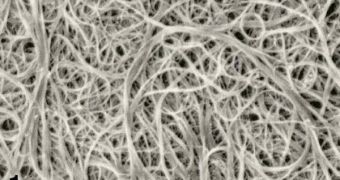Detecting bacteria using existing techniques in the laboratory at this point takes at least two days to perform. The samples are first enriched, then separated, identified and counted, and the entire process just takes up a lot of resources and time. With the help of a new biosensor, this type of analysis may soon become a thing of the past. It can detect extremely low bacterial concentrations very easily, and quickly too. The device could even be used in the field, for an on-the-spot analysis of samples.
The Spanish research team behind the innovation says that the device is error-free and completely accurate, traits that have long been sought after by doctors, civil engineers and people in the military. In a study published in the latest issue of the scientific journal Angewandte Chemie, the team details the results that the new device produced on minute samples of the typhus-inducing Salmonella typhi bacterium. They also describe the basic operating principles of the new apparatus.
Carbon nanotubes are the basis for this technique. The small tubes are laden with aptamers – short strands of DNA or RNA created so as to bind specifically to a single type of molecule. Any pathogen binding with the aptamers causes a shift in the electrical potential of the whole carbon nanotube that the experts can pick up on their measuring devices. The strands are bound to the nanotubes using functional groups, specific groups of atoms within molecules that are directly responsible for the chemical reactions that are unique to those types of molecules.
The nanotubes are placed on an electrode in an ultrathin layer, which is able to reveal the electrical current changes that occur when the aptamers combine with a pathogen. Because of the nanotubes and their tight spatial disposition, the biosensor in itself is capable of detecting concentrations of bacteria equivalent to one cell in five milliliters of liquid, which is enormous, by all accounts. “Our new technique makes the detection of micro-organisms as fast and simple as the measurement of pH value,” Jordi Riu and F. Xavier Rius, both from the University Rovira i Virgili in Tarragona, Spain, explain, PhysOrg informs.
The results themselves take only seconds to display, and, in the future, the biosensor could be used to assess wound conditions, as well as the quality of water in areas where threats on the water supplies exist.

 14 DAY TRIAL //
14 DAY TRIAL //